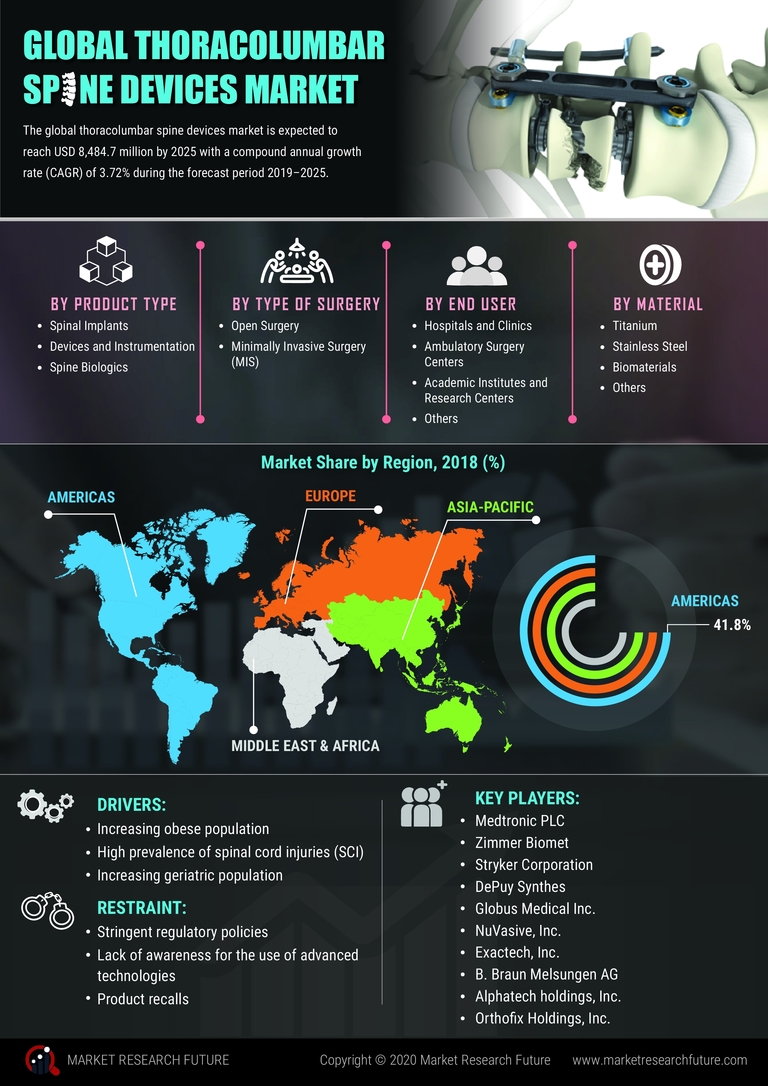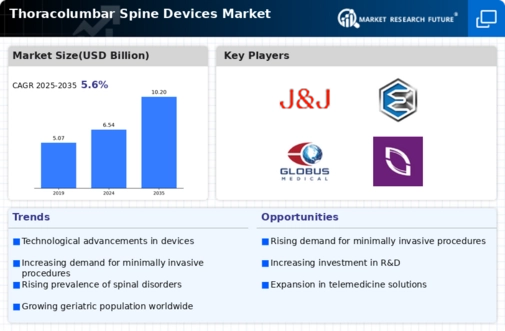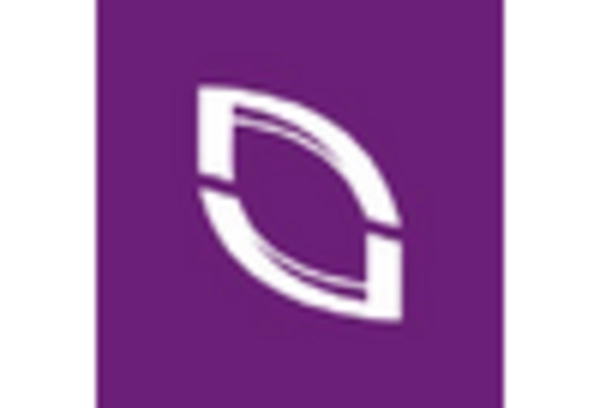Market Growth Projections
The Global Thoracolumbar Spine Devices Market Industry is projected to experience substantial growth in the coming years. With a market value of 6.54 USD Billion in 2024, it is anticipated to reach 10.2 USD Billion by 2035, indicating a robust expansion trajectory. The expected CAGR of 4.12% from 2025 to 2035 highlights the increasing investment in research and development, as well as the introduction of innovative products. This growth is supported by various factors, including technological advancements, demographic shifts, and rising healthcare expenditures, which collectively contribute to a dynamic and evolving market landscape.
Rising Healthcare Expenditure
Global healthcare expenditure is on the rise, contributing to the expansion of the Global Thoracolumbar Spine Devices Market Industry. Increased investment in healthcare infrastructure and surgical facilities enhances access to advanced spinal treatments. Countries are allocating more resources to improve healthcare services, which includes funding for spinal surgeries and the procurement of innovative devices. This trend is likely to facilitate the growth of the market, as patients are more willing to seek surgical interventions for spinal disorders. The financial commitment to healthcare is expected to bolster the market, ensuring that cutting-edge thoracolumbar devices are available to meet patient needs.
Growing Awareness and Education
There is a notable increase in awareness regarding spinal health and available treatment options, which positively impacts the Global Thoracolumbar Spine Devices Market Industry. Educational initiatives aimed at both healthcare professionals and patients are fostering a better understanding of spinal disorders and the importance of timely intervention. This heightened awareness is likely to lead to increased consultations and surgical procedures, thereby driving market growth. As patients become more informed about their options, the demand for advanced thoracolumbar devices is expected to rise, reflecting a proactive approach to spinal health management.
Increasing Geriatric Population
The aging population worldwide significantly influences the Global Thoracolumbar Spine Devices Market Industry. As individuals age, they are more susceptible to spinal disorders, which increases the demand for effective treatment solutions. By 2035, the market is anticipated to reach 10.2 USD Billion, reflecting the urgent need for specialized devices catering to this demographic. Healthcare systems are increasingly focusing on geriatric care, leading to a rise in surgical interventions for spinal issues. This demographic shift necessitates the development of devices that are not only effective but also tailored to the unique needs of older patients, thereby driving market growth.
Rising Incidence of Spinal Disorders
The increasing prevalence of spinal disorders globally drives the demand for thoracolumbar spine devices. Conditions such as degenerative disc disease, scoliosis, and spinal stenosis are becoming more common, necessitating advanced treatment options. The Global Thoracolumbar Spine Devices Market Industry is responding to this trend, with a projected market value of 6.54 USD Billion in 2024. This rise is indicative of the growing need for surgical interventions and innovative devices that can enhance patient outcomes. As the population ages and lifestyle factors contribute to spinal issues, the market is likely to expand further, addressing the needs of a diverse patient demographic.
Technological Advancements in Spine Surgery
Innovations in surgical techniques and device design are pivotal in shaping the Global Thoracolumbar Spine Devices Market Industry. Minimally invasive procedures, robotic-assisted surgeries, and advanced imaging technologies are enhancing surgical precision and patient recovery times. These advancements not only improve surgical outcomes but also reduce hospital stays and associated costs. As a result, the market is expected to grow, with a projected CAGR of 4.12% from 2025 to 2035. The integration of smart technologies into spine devices further indicates a trend towards personalized medicine, potentially revolutionizing treatment protocols and patient management.

















Leave a Comment